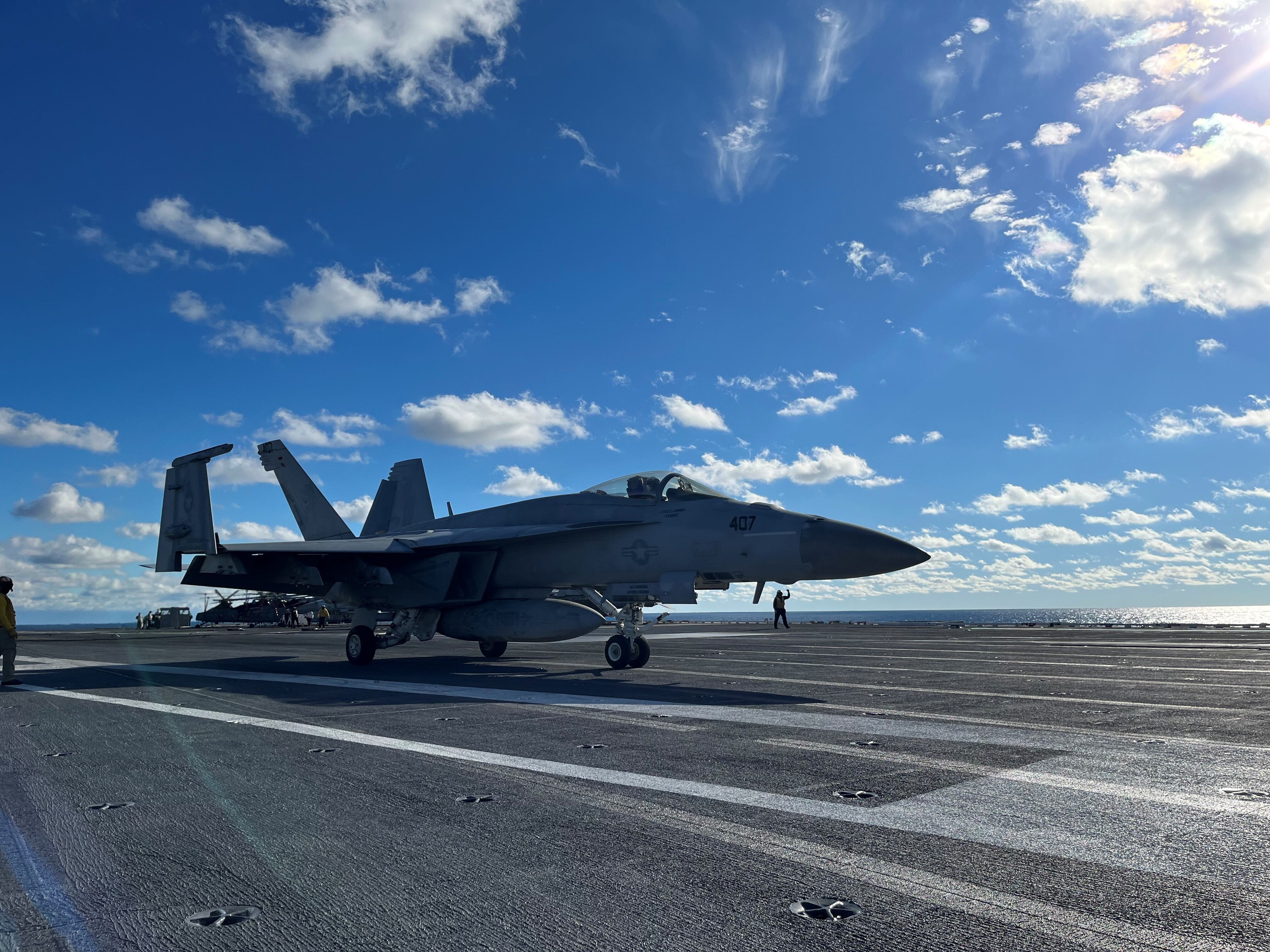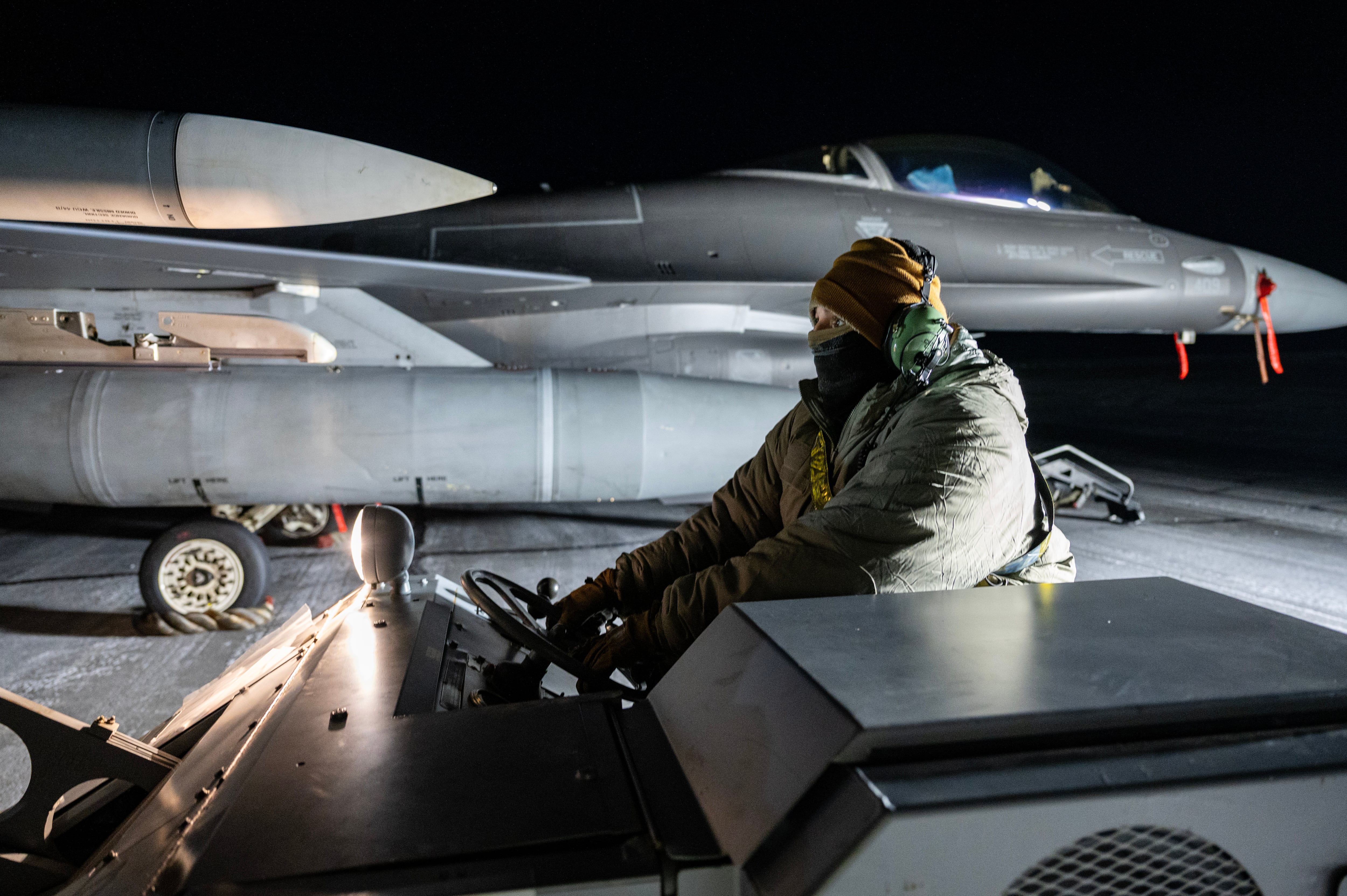With nearly all of Carrier Air Wing 8 is embarked aboard the aircraft carrier Gerald R. Ford for its initial deployment, the pilots and crews are focused on acclimating to the new technologies and capabilities of the first-in-class flattop in preparation for a longer deployment next year.
The Ford departed Naval Station Norfolk, Virginia, Oct. 4, for a service-retained deployment, meaning the strike group is operating under the authority of Chief of Naval Operations Adm. Mike Gilday. rather than a geographic combatant commander, which would be the norm during a global force management deployment.
The training operations will prepare the Ford for a more routine deployment in 2023, according to Navy leaders.
“There’s a lot of training that we’re doing,” Capt. Daryl Trent, commander of Carrier Air Wing 8, told reporters aboard the Ford shortly after it left Norfolk “So, we’ve got to get the basic blocking and tackling accomplished with reps and sets. And, as the air wing commander, that’s one aspect I want to get very comfortable with in the carrier environment. Our pilots are very good, obviously, ashore. But mastering the carrier environment is, you know, one of my objectives out here.
“Our responsibility is reps and sets,” he continued. “We’re going to come out here and we’re going to fly, and we’re going to practice every skill set that a normal carrier strike group has,” Trent said.
That includes the Ford conducting air operations with NATO allies for the first time, which will require hashing out best communication practices to support interoperability, Trent said.
Joining the Ford on this deployment will be approximately 9,000 personnel, 20 ships and 60 aircraft from nine different countries, including Canada, Denmark, France and Germany.
“We will have aircraft that will take off and they will check in with a foreign ship, and they’ll be under the control of a foreign ship,” Trent said. “So, just that integration, so we are able to effectively talk to them and get over any communication barriers … We’re working through all those issues, and … digital communication as well.”
RELATED
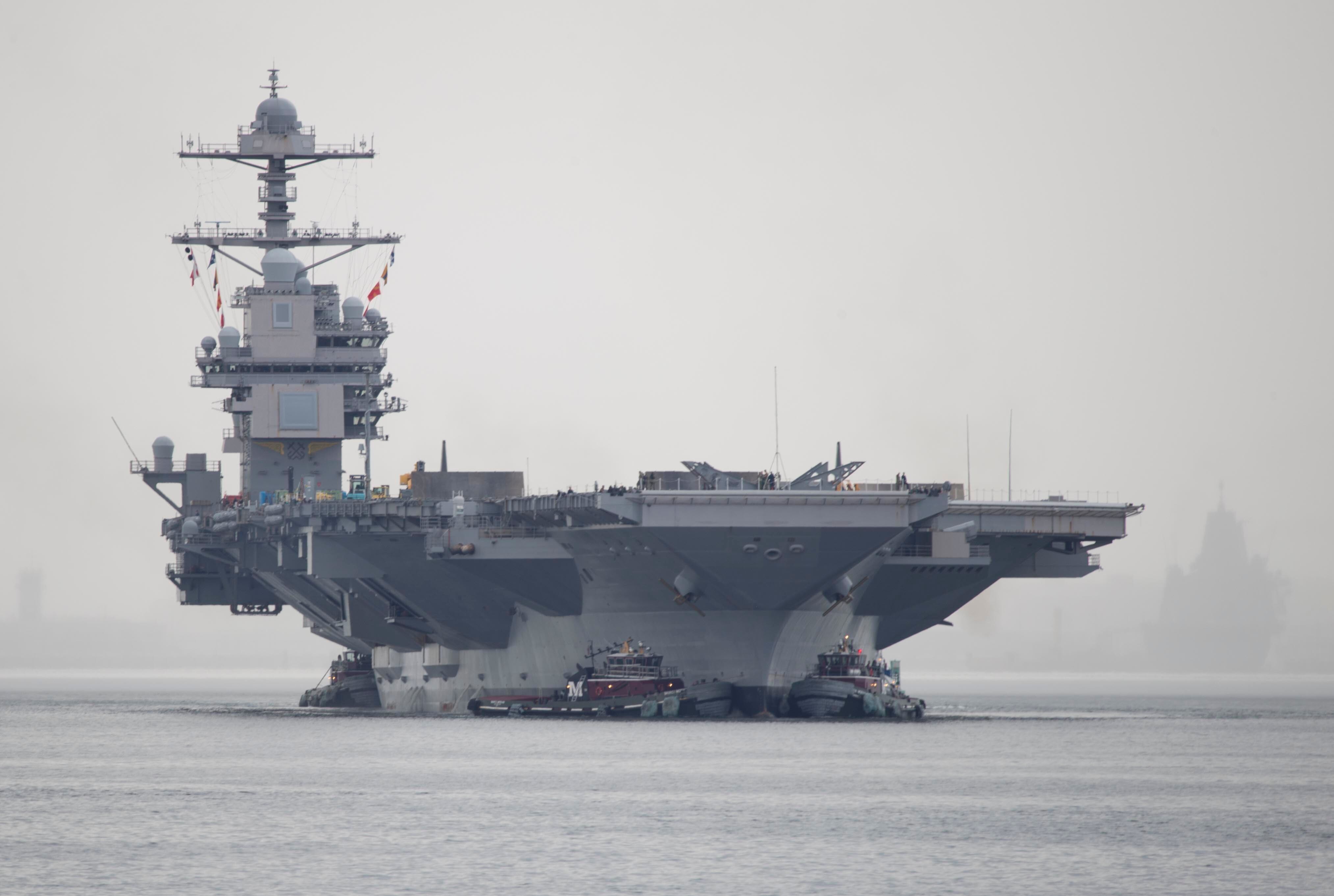
According to 2nd Fleet Commander Vice Adm. Daniel Dwyer, the Ford conducted more than 10,000 catapult and carrier landings prior to departing Norfolk. But quantity, both in terms of aircraft and days at sea, separates this deployment from previous exercises conducted aboard the Ford.
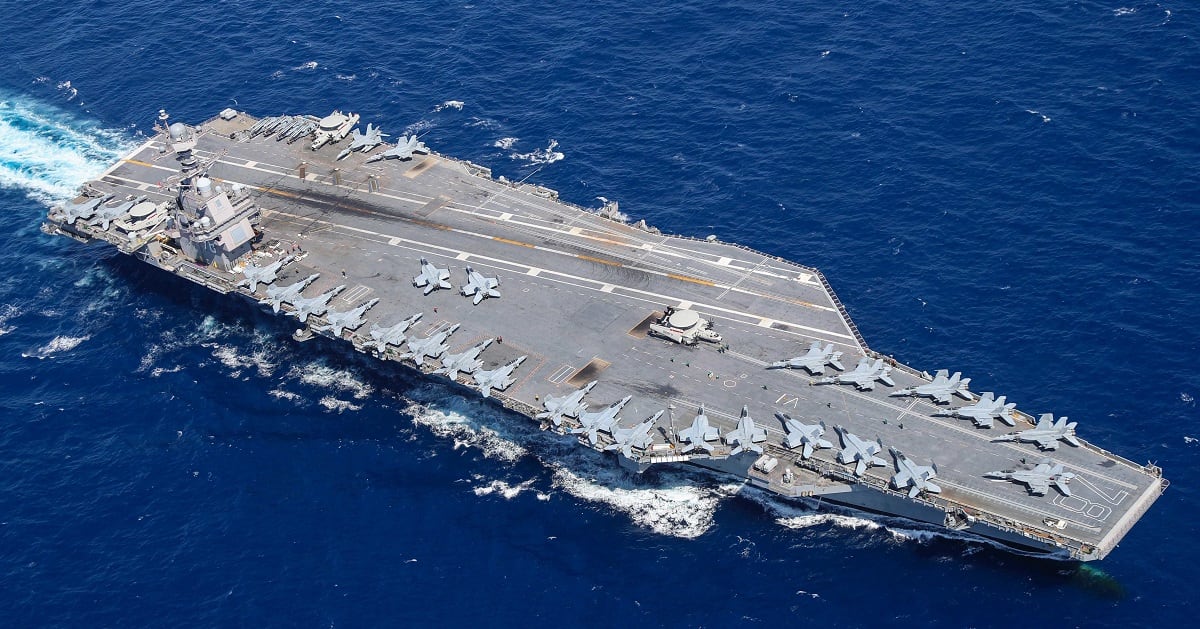
As a result, the initial deployment will provide an opportunity to conduct tasks previously not done in training, said the Ford’s Air Boss, Cmdr. John Peterson.
“It really gives us an opportunity to do different types of flight ops that we haven’t really had a lot of opportunity to do in the past,” Peterson told reporters. “We’ve had a couple embarkations with the air wing, but every time you add a little bit more, it adds … complexity to how you manage the flight deck, how you manage the hangar bay, how we move aircraft in between.”
Next-gen tech
The wing is also fully exercising the advanced weapons elevators “so that we can load the aircraft up for various missions and really get them on the cycles that we would do on a deployment,” he said.
The Ford’s island, the command center for flight-deck operations and the ship as a whole, is further aft than it is on Nimitz-class carriers. That design change, which helped give the Ford an extra half acre of real estate over its predecessors, allows the air wing to have more aircraft ready at any given time, Trent said.
The extra space is key to the Navy’s newest platform, built from the keel up to maximize how efficiently the ship can generate sorties, as well as boosting its adaptability for new aircraft and weapons systems over time.
“They designed it like that so we have so much acreage in front of us that we can line our aircraft up on the catapults and get them out of here,” he said. “On a Nimitz, we’re kind of in the middle, and there’s not a whole lot of area. And then when you taxi aircraft out in the landing area, you can’t land anybody at the same time.
“That’s an awesome aspect of it that I really like — that we could have more aircraft ready, armed to get into the fight,” Trent said.
The Ford’s flight deck is also outfitted with fuel ports, which streamline refueling operations. Previously, crew members had to use catwalks on the side of the carrier and pull hoses across the deck, Trent said.
“We have wells inside the deck now so we can just pull a hose up, hook it up to the aircraft and refuel it, and off we go,” Trent said. “So, that adds to our efficiency, which is significant. That is what’s going to be the game changer, in my opinion, the efficiency of a Ford class versus the Nimitz class.”
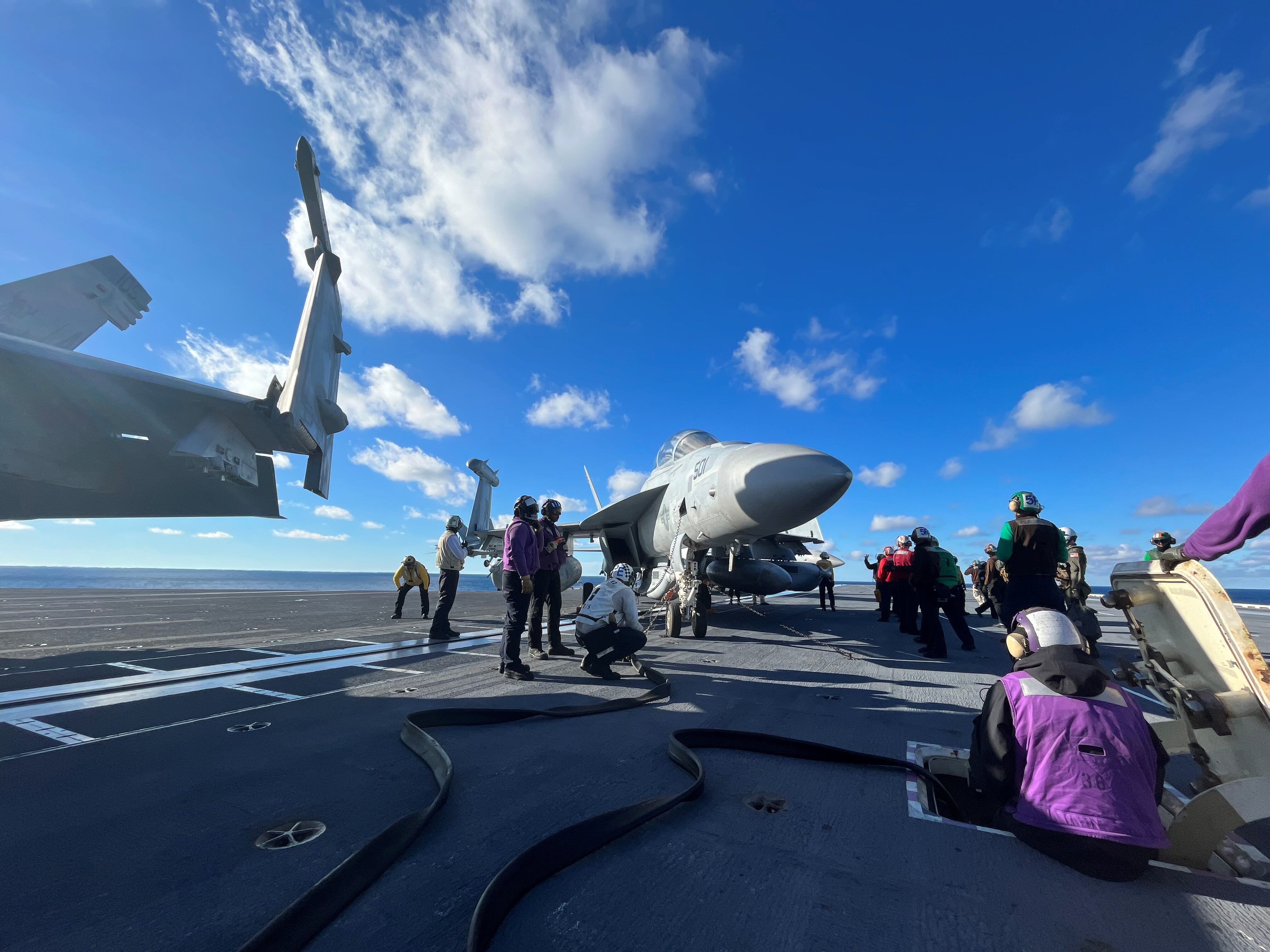
The carrier’s Electromagnetic Aircraft Launch System (EMALS) — one of the innovations that sparked controversy because of delays and cost overruns — is running smoothly now and reduces manning needs in comparison to Nimitz-class carriers’ steam-powered catapult systems.
“The change between steam and electric, it’s pretty wide ranging from the standpoint of our manning and equipment,” Peterson said. “So, from a manning perspective, we’re an optimally manned carrier. What that means is we’ve got less sailors but the equipment allows us to operate, launch and recover aircraft with far fewer sailors. And, depending on the watch station, we have one watch station where 24 sailors on a Nimitz-class carrier are now replaced by a single sailor, working in an air-conditioned space.”
A phased approach
During its deployment, the Ford will go through eight phases — in which it conducts tasks such as air defense exercises, maritime domain awareness, long-range maritime strikes, distributed maritime operations, anti-submarine warfare exercises and naval integration — in preparation for the more traditional 2023 deployment, Dwyer said.
It will carry out these missions with allies and Carrier Strike Group 12, which includes destroyers Ramage, McFaul and Thomas Hudner, the cruiser Normandy, the replenishment oiler Joshua Humphreys, the dry cargo ship Robert E. Peary and U.S. Coast Guard cutter Hamilton.
“We start with air defense exercises. We’ll be doing a war-at-sea maritime strike and operations; we’ll be doing distributed maritime operations where we extend the force to a bigger footprint,” Ford’s commanding officer Capt. Paul Lanzilotta told reporters. “And whether it’s our satellite communications, or the aircraft embarked on the ship that extend our line of sight, we’ll use all of that to maneuver the force. We’re going to practice all of it.
“It’s not good enough for the United States Navy to just operate, and operate the same way; we have to keep getting better,” Lanzilotta said. “So, I need to be able to provide objective, tangible things that our Navy can work on to do what we do better.”
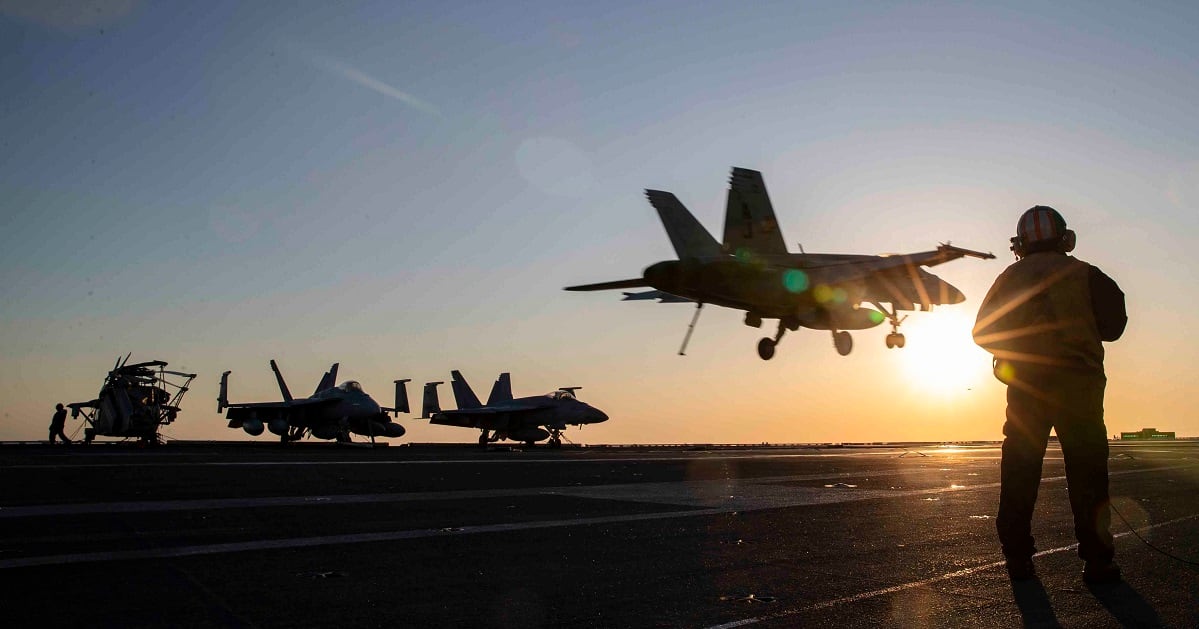
Of all the 23 new technologies installed aboard the carrier, Lanzilotta believes the Advanced Weapons Elevator is proving to be the most significant and influential — and it was the technology that received the most time and energy since other technologies were more mature upon delivery to the ship.
The 11 elevators, whose installation produced multiple delays and pushed the carrier’s initial deployment from 2018 to 2022, carry massive amounts of munitions from below the ship to the hangar bay and to the flight deck.
“They legitimately move a lot more ordnance a lot more quickly than older ships,” Lanzilotta said. “And that’s an important enabler for warfighting.”
